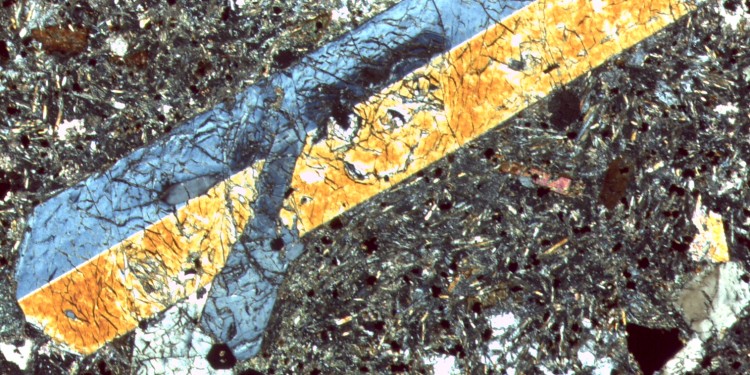
Geologists discover previously unknown region of the Earth’s mantle
The Bermuda Islands – a very special terrain in the middle of the western Atlantic Ocean, not only for its white beaches, but also because the archipelago is at the top of a 4,570-metre high volcano that died out about 30 million years ago. An international team of researchers has now taken a closer look at this geological peculiarity and geochemically examined the magma rock under Bermuda for the first time. The aim of the researchers was to draw conclusions about the inner composition of the Earth. The result: The geologists discovered a yet unknown region of the Earth’s mantle – the shell of the Earth’s interior, which begins under the outermost crust of the Earth and descends 2,900 kilometres into the Earth's interior.
The newly discovered region is characterised by a special atomic composition of lead, which is formed by radioactive decay, as well as carbon, water and other volatile substances. "Our study shows that our understanding of the composition of the Earth’s mantle is still incomplete – although we have been studying it for almost a century," explains Dr. Sarah Mazza of the Institute for Planetology at the University of Münster, one of the two lead authors of the study. The study was published in the scientific journal "Nature".
The researchers suspect that the newly discovered mantle reservoir comes from rock slabs that remain from Pangaea, the last supercontinent in Earth’s history, and are stored in the so-called transition zone – the area between 410 and 660 kilometres deep, which is regarded as the transition from the upper to the lower mantle. This is probably the first direct rock sample knowledge of the transition zone – most of the previous knowledge had been obtained by researchers from other techniques such as deep mantle diamond exploration and geophysical calculations. "With this work we can demonstrate that the Earth’s transition zone is an extreme chemical reservoir. Our next step is to examine more locations to determine the role of the mantle’s transition zone in the evolution of our planet," says Prof. Esteban Gazel of Cornell University (USA), who also led the study.
Background and methods
The researchers used samples of volcanic rock taken from a borehole drilled in Bermuda in the 1970s that was about 770 metres deep. With the help of geochemical analyses, the scientists discovered that the earth beneath Bermuda consists of two types of volcanic rock. One of these is enriched with water, carbon dioxide and trace elements and is unique in that it has the highest proportion of certain lead isotopes ever measured on an oceanic island. Such types of atoms, formed from the decay of uranium, allow geologists to determine the composition of the Earth’s mantle, because the chemical composition in a volcano is the same as that in the region of the Earth’s mantle from which the molten rocks originate.
In a further step, the researchers combined the results of their geochemical analysis with so-called geodynamic calculations, i.e. models of forces in the earth and the resulting movements. They concluded that the material could have originated from Pangaea, a land mass connecting all continents of the earth that existed until 150 million years ago and whose remains, old rock slabs, slipped into the transition zone and were stored there due to movements in the earth's crust and upper mantle. “We show that the formation of supercontinents and this recent reprocessing of the Earth’s mantle material – ‘recent’ in the last 20 percent of Earth’s history - are important in maintaining chemical diversity in the mantle,” stresses Sarah Mazza.
The study also sheds light on how water and carbon are stored in the Earth’s mantle, and Bermuda seems to be a key location for understanding the carbon cycle deep inside the Earth. In addition, the results could help determine how much carbon is present in the Earth as a whole.
In follow-up studies, scientists want to continue exploring the mystery of Bermuda by examining the mineralogy and geochemistry of borehole samples.
Scientific contributions and funding
In addition to the University of Münster and Cornell University, researchers from the University of South Carolina, Syracuse University, James Madison University and the United States Geological Survey (USGS) were also involved in the study. Other contributions were made by the University of Grenoble in France and the Vernadsky Institute of Geochemistry and Analytical Chemistry in Russia.
The study received financial support from the US National Science Foundation.
Original publication:
S. Mazza et al. (2019): Sampling the volatile-rich transition zone beneath Bermuda. Nature; DOI: 10.1038/s41586-019-1183-6
